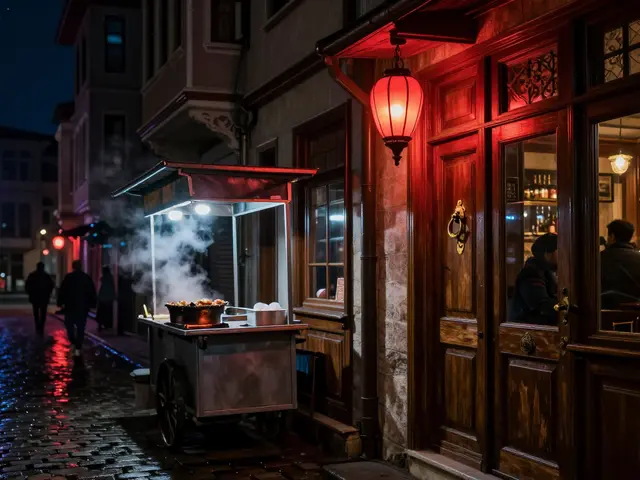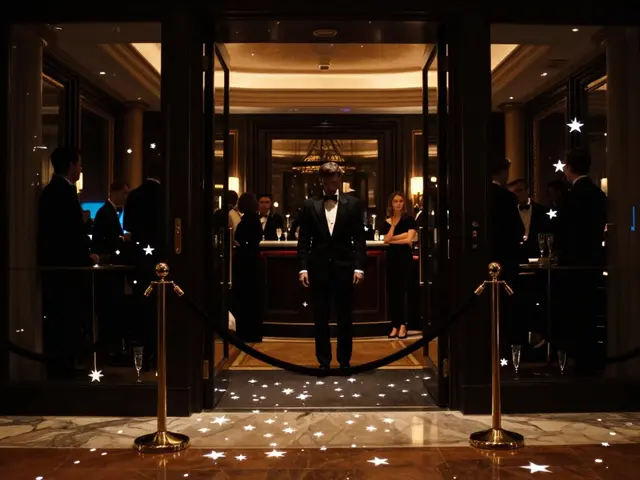When you think of Berlin, you might picture the Brandenburg Gate, the Berlin Wall, or the pulsing energy of techno clubs. But beneath the surface of its modern identity lies a quieter, older story-one of companionship, power, and survival through centuries of upheaval. Berlin has long been a city where people came to disappear, to reinvent themselves, or to find someone who understood them without judgment. And in that space, certain women-and occasionally men-rose beyond mere service to become legends.
The Courtesans of Imperial Berlin
In the late 1800s, Berlin was booming. The German Empire had just been forged, and the city was filling with industrialists, soldiers, diplomats, and artists. Among them were women who offered more than sex-they offered conversation, elegance, and access. These weren’t streetwalkers. They were educated, often multilingual, and moved in circles where princes and poets crossed paths.
One name that still echoes in memoirs is Clara Schumann-not the famous pianist, but a lesser-known namesake who hosted salons in Tiergarten. Her clients included Otto von Bismarck’s inner circle, and she was known for her sharp wit and ability to turn political gossip into profitable alliances. She didn’t advertise. She was recommended. Her fees? Equivalent to a factory worker’s annual salary. Yet she never took a single client without a reference. Her reputation was her only contract.
These women weren’t just companions. They were cultural brokers. In a society where women had few rights, they carved out autonomy through charm, intelligence, and discretion. Their homes became safe spaces for liberal thinkers, Jewish intellectuals, and dissident artists-all under the radar of the Prussian police.
Between the Wars: Glamour and Danger
The 1920s turned Berlin into a playground for the world’s avant-garde. Cabarets lit up the night. Drag shows drew crowds of diplomats and poets. And at the center of it all were the escorts who moved between the glitter and the gutter.
Trude Becher was a star of the Tanzpalast Eden. She danced, she drank, she smoked in public-and she was openly bisexual at a time when that could land you in prison. Her clients ranged from American jazz musicians to Soviet spies. She kept no ledger, no address book. Instead, she remembered faces, voices, secrets. One of her regulars, a British journalist, later wrote that she could tell if you were lying just by how you held your glass.
After the Nazis rose to power in 1933, everything changed. Many of these women vanished. Some were arrested under Paragraph 175. Others fled to Paris or London. Trude disappeared in 1936. No one knows if she was taken, or if she simply walked away into another life.
East vs. West: Companionship Under Surveillance
After World War II, Berlin was split. In the East, the GDR claimed to have abolished prostitution. But behind closed doors, state-approved companionship still existed-mostly for foreign dignitaries, diplomats, and high-ranking party members. These women were carefully selected by the Stasi. They were trained in languages, etiquette, and how to extract information without asking a single direct question.
In the West, the American and British military bases created a new demand. Young women from rural Germany flocked to Berlin, offering companionship to lonely soldiers. Some stayed, married, built lives. Others returned home with nothing but a suitcase and a story they never told.
One of the most talked-about figures from this era was Elisabeth "Liesl" Vogt, who ran a discreet service in Charlottenburg. She didn’t take cash. She took books. Her clients left her first editions, rare vinyl records, or handwritten letters. In return, she gave them silence, warmth, and the rare gift of being truly heard. Her apartment became a kind of archive of human longing.
Modern Berlin: Beyond the Stereotypes
Today, Berlin’s escort scene is digital, diverse, and rarely discussed in public. But the legacy remains. Many modern companions still operate with the same principles: discretion, intelligence, emotional presence. They’re not just service providers-they’re therapists, confidants, cultural translators.
Take Julia M., who works independently and refuses to use agencies. She has a background in philosophy and teaches literature on the side. Her clients include tech entrepreneurs, retired professors, and single parents. She doesn’t advertise on apps. She relies on word-of-mouth. Her rate? €300 an hour. But she’ll spend three hours with someone who just needs to talk. She says, "I’m not selling time. I’m selling presence. And that’s something no algorithm can replicate."
There are also male escorts, non-binary companions, and older individuals offering companionship to those who feel invisible. Berlin still gives space to those who don’t fit neatly into society’s boxes.
Why These Women (and Men) Still Matter
These aren’t just stories of sex work. They’re stories of resilience. Of people who, in times of repression, found ways to survive on their own terms. They built networks when institutions failed them. They preserved dignity when the world tried to strip it away.
Today, Berlin’s most iconic escorts aren’t famous for their looks or their prices. They’re remembered for their humanity. For listening when no one else would. For offering connection in a city that’s always moving, always changing, always lonely for someone who truly sees you.
There’s no plaque on the street for Clara Schumann. No statue for Trude Becher. But if you walk through the quiet alleys of Kreuzberg or sit in a café in Prenzlauer Berg, you might still hear their echoes-in the laughter of a woman who knows too much to be judged, in the silence between two people who don’t need to explain themselves.
What Made Them Legendary
What set these individuals apart wasn’t their beauty or their charm-it was their depth. They didn’t just meet a need. They transformed it. They turned transaction into trust. Service into sanctuary.
They knew when to speak and when to stay quiet. They remembered birthdays, allergies, fears. They held space for grief, ambition, shame, and joy. And in doing so, they became more than companions. They became anchors in a city that’s always reinventing itself.
That’s the real legacy of Berlin’s most iconic escorts-not the rumors, not the scandals, but the quiet, unrecorded moments of connection that outlasted empires, wars, and revolutions.
Were Berlin escorts ever officially recognized or regulated?
Not in the way you might expect. In Imperial Germany, prostitution was tolerated but not licensed. In East Berlin, the state denied its existence while quietly managing it for diplomatic purposes. After reunification, Germany legalized sex work in 2002, but most independent companions in Berlin avoid legal frameworks to maintain privacy. The most respected figures today operate outside formal systems, relying on reputation and trust instead of contracts.
Are there any famous escort memoirs from Berlin?
Very few were published under real names, especially during the Nazi and Cold War eras. One notable exception is "The Berlin Companion" by "E. Richter" (pseudonym), released in 1988. It details life as a companion in West Berlin during the 1970s and offers rare insight into the emotional labor involved. Most personal accounts were destroyed, lost, or kept private out of fear or shame.
How do modern Berlin escorts differ from those in the past?
Modern companions use apps and websites for booking, but the best ones still prioritize personal connection over transactions. Unlike the past, where discretion was enforced by fear, today’s escorts choose privacy as a boundary. Many have university degrees, speak multiple languages, and treat their work as a form of emotional labor. The biggest shift? Clients now often seek emotional support as much as physical presence.
Did any former escorts become public figures?
A few did-though rarely by choice. After the Wall fell, some former East German companions were interviewed by journalists, but most refused to be named. One woman, later revealed to be a former Stasi-approved companion, became an activist for sex workers’ rights under a pseudonym. She helped establish Berlin’s first peer-support network for companions in 1995. Her real name was never published.
Is it possible to visit places tied to these historical figures today?
Yes, but not as tourist sites. Clara Schumann’s salon was near today’s Tiergarten Park, though the building is gone. Trude Becher’s club, Tanzpalast Eden, stood where a modern art gallery now sits. Liesl Vogt’s apartment in Charlottenburg still exists-now a quiet residential building. The real landmarks aren’t physical. They’re in the conversations still happening in Berlin’s cafés, libraries, and late-night bars-where connection still matters more than currency.




